MY VISION
50 Years Later:
Continuing Significance, Ongoing Challenges
The Nippon Institute for Research Advancement celebrates its 50th anniversary this year.
In this issue of My Vision, we will look back at the major events that took place at the time of NIRA’s establishment, and consider the significance of these events for those of us living now.
EXPERT OPINIONS
- 50 Years Later: Continuing Significance, Ongoing Challenges
Fifty years later, we consider the events that took place in 1974.
What meaning do they hold for us today?
-
01
The Tanaka Era Is the “Origin Scene” of Current Japanese Politics
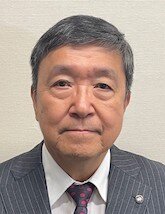 Shinichi Yoshida Director and Advisor, TV Asahi CorporationSince the resignation of Prime Minister Kakuei Tanaka in 1974 amid allegations of financial misdealings...
Shinichi Yoshida Director and Advisor, TV Asahi CorporationSince the resignation of Prime Minister Kakuei Tanaka in 1974 amid allegations of financial misdealings... -
02
Responding to Stagflation Through Japanese-style Labor-Management Relations and the Transformation of the Nation’s Industrial Structure
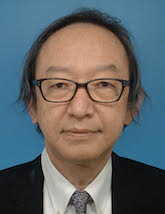 Tetsuji Okazaki Professor, Faculty of Economics, Meiji Gakuin UniversityThe year 1974 was a turning point for Japan's economy, with massive changes occurring against the...
Tetsuji Okazaki Professor, Faculty of Economics, Meiji Gakuin UniversityThe year 1974 was a turning point for Japan's economy, with massive changes occurring against the... -
03
We Must Further Discussion Regarding Japan’s Security Policy and the Three Non-nuclear Principles Established by the Sato Administration
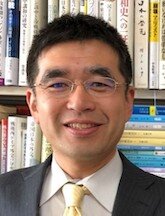 Ryota Murai Professor, Faculty of Law, Komazawa UniversityIn 1974, Eisaku Sato, the former Prime Minister of Japan, was awarded the Nobel Peace Prize...
Ryota Murai Professor, Faculty of Law, Komazawa UniversityIn 1974, Eisaku Sato, the former Prime Minister of Japan, was awarded the Nobel Peace Prize... -
04
The Nixon Resignation: The Climax of a Collapse of Public Trust in the Government
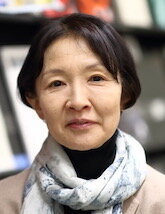 Fumiko Nishizaki Professor Emeritus, The University of TokyoIn 1974, U.S. President Richard Nixon was forced to resign in the middle of his term. Nixon's resignation can...
Fumiko Nishizaki Professor Emeritus, The University of TokyoIn 1974, U.S. President Richard Nixon was forced to resign in the middle of his term. Nixon's resignation can... -
05
Shigeo Nagashima Retires: The Showa Era, a Time When People Identified With a Hero, Inspiring Happiness and Sadness
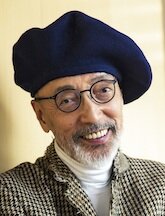 Terry Ito Television directorThe retirement of superstar baseball player Shigeo Nagashima in 1974 marked the end of an era not only...
Terry Ito Television directorThe retirement of superstar baseball player Shigeo Nagashima in 1974 marked the end of an era not only...
ABOUT THIS ISSUE
-
50 Years Later: Continuing Significance, Ongoing Challenges
- Japan and the World at a New Turning Point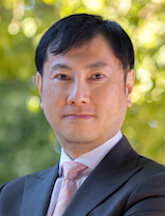
50 Years Later: Continuing Significance, Ongoing Challenges
- Japan and the World at a New Turning PointMasaki Taniguchi President, NIRA / Professor, Graduate School of Public Policy, The University of TokyoThis year, we celebrate NIRA’s 50th anniversary, including the years of existence of our predecessor organization. During this period, the society and economy around us have undergone significant transformations. We therefore wish to take this opportunity to look back at the major events that took place when NIRA was established in 1974 and consider what impact they had on Japan and the world, how this has been bequeathed to those of us living today, and what challenges remain.



expert Opinions
01
The Tanaka Era Is the “Origin Scene” of Current Japanese Politics
The Tanaka Era Is the “Origin Scene” of Current Japanese Politics
Shinichi Yoshida Director and Advisor, TV Asahi Corporation
Since the resignation of Prime Minister Kakuei Tanaka in 1974 amid allegations of financial misdealings, Japan has continued to suffer from “Tanaka politics.” This has represented a thorny issue for Japan’s postwar democracy, and even now, 50 years later, no solution has emerged. In this sense, the Tanaka era represents the “origin scene” of Japan’s postwar political landscape.
One aspect of this is the practice of pork-barrelling for votes. Against the backdrop of economic growth, politicians provided direct benefits to their voters and in return secured support from those voters. The exchange of the distribution of government funds for voter support can be said to have crystallized during the Tanaka era. Even after the transition to low growth, this tacit understanding continued to exist; voters put aside their awareness of the “cost of democracy” and the burden it entails, and instead demanded from politics only short-term gains as constituent beneficiaries. This is where the issue of “money politics” derives from. Another aspect is the “rule of numbers.” Behind majority rule we should see a foundation of tolerance and a process of adjustment, i.e., “politics” as such. However, brute force politics by numbers has gradually increased in intensity. In recent years, we have seen a situation in the Diet in which the ruling party overcomes opposition without appropriate debate, exerting naked strength through force of numbers. The origin of this can be traced to “Tanaka politics.”
These problems have continued unabated. The recent slush fund scandal involving factions of the Liberal Democratic Party (LDP) is simply the latest version of the “money politics” problem. In the 1990s, a system of single-seat constituencies was introduced in the House of Representatives and party subsidies were also established in order to provide a corrective to expensive politics. The resulting subsidies for elections were huge, enabling political parties, which have the ability to endorse candidates, to increase their influence dramatically. There are no laws that specifically govern the expenditure of these subsidies, and lax accounting regarding their use is tolerated. Furthermore, in recent years, a new dimension of the “rule of numbers” has come to the forefront as a manifestation of the “post-truth” era. Political parties repeatedly and loudly justify themselves unilaterally, providing no explanations and hiding the truth. We are moving into an era in which anything goes, provided that the “numbers” are there to justify their version of democracy.
“Tanaka Politics” also exposed the problem of the lack of distance between power and journalism. It was not the newspapers, the constant observers of the political scene, that uncovered Tanaka’s financial misdealings, but rather the freelance journalist Takashi Tachibana and his magazine team. At the time, in the U.S., newspapers were working to expose the Pentagon Papers and report on the Watergate scandal. By contrast, Japanese political reporting was focusing on the day-to-day political scene, acquiring information by developing relationships with politicians. Is this not simply a form of “access journalism”?
Who will monitor the “quality” of Japan's political culture? What is the essential nature of Japanese journalism? The same questions that confronted us immediately after the end of the war have surfaced repeatedly in different guises since then. Despite numerous attempts at reform, there is still no solution to the “origin scene” of contemporary Japanese politics.
Mr. Yoshida is a journalist. He joined the Asahi Shimbun in 1974 when Kakuei Tanaka stepped down from office, and was assigned to the Fukushima Bureau. His serialized article “Kimura oukoku no houkai (“The Collapse of Kimura's Kingdom”),” which covered the corruption case known as the “Fukushima version of the Lockheed scandal,” won the Japan Newspaper Publishers and Editors Association Prize. The article was published in the book Dokyumento: Jichitai oshoku - Fukushima / Kimura oukoku no houkai (“Document: Municipal Corruption - The Collapse of Kimura's Kingdom in Fukushima”). Following this, he was transferred to the Political Affairs Department, where he oversaw reportage on the Tanaka faction of the Liberal Democratic Party for about two years from 1982. As a result, he published Tanaka shihai to sono houkai (“Tanaka’s Rule and Its Collapse”) (Asahi Shimbun, 1987). He served as a member of the Asahi Shimbun Editorial Board, Chief Editor of the Tokyo head office, Managing Director in charge of Editing, and President of TV Asahi HD before assuming his current position. He is a graduate of The University of Tokyo’s Faculty of Law.
02
Responding to Stagflation Through Japanese-style Labor-Management Relations and the Transformation of the Nation’s Industrial Structure
Responding to Stagflation Through Japanese-style Labor-Management Relations and the Transformation of the Nation’s Industrial Structure
Tetsuji Okazaki Professor, Faculty of Economics, Meiji Gakuin University
The year 1974 was a turning point for Japan's economy, with massive changes occurring against the backdrop of the oil crisis. The year was marked by negative growth for the first time since 1946, and what could only be termed runaway inflation. The growth rate had previously been 5% even in the midst of recession, but suddenly became negative, and the rate of increase in wholesale prices exceeded 20%. In other words, the Japanese economy was facing the severe condition termed “stagflation,” in which recession and inflation coexist.
The Kakuei Tanaka Cabinet, which was formed in 1972, issued deficit-covering government bonds and implemented a large-scale fiscal stimulus package to counter the strong yen and recession and to promote the “remodeling of the Japanese archipelago,” while at the same time putting pressure on the Bank of Japan (BOJ) to continue its program of massive monetary easing. At the time, economist Ryutaro Komiya pointed out that the severe inflation was not solely caused by the rapid rise in oil prices, but that monetary easing was also a factor.
Nevertheless, Japan was able to adapt to these shocks more successfully than other countries. Two major factors contributed to this success: first, the functioning of so-called Japanese-style labor-management relations saw workers accepting reductions in real wages to protect their jobs, preventing inflation from spilling over into wages. While today the goal is the achievement of a virtuous cycle between prices and wages, at that time the challenge was how to break the vicious circle between rising prices and rising wages.
Another factor was the transformation of Japan’s industrial structure. The shift from the oil-using heavy industries that had driven Japan's growth up to that point, such as steel and nonferrous metals, to industries that process materials, was more rapid than in other countries. The success of these measures, combined with the subsequent development of energy-saving technologies that improved energy efficiency, helped to establish Japan's position as an economic powerhouse.
This period also marked a major turning point in terms of monetary and fiscal policy. The BOJ reexamined its orientation regarding monetary policy, reflecting on the fact that the monetary easing of the time had contributed to runaway inflation. The central bank transitioned from its previous emphasis on price indexes to a form of policy management that also closely monitored the quantity of money supply. In addition, 1973 saw a reform of Japan’s social security system, coming to be known as the “first year of welfare”; this was when social security spending began to represent a significant proportion of public expenditure. From this point on, deficit-covering government bonds began to be issued almost every year. It should also be noted that the subsequent development of a secondary bond market to absorb government bonds led to the liberalization of the financial system.
A widely-published scholar, Professor Okazaki specializes in Japanese economic history and comparative economic history. He has conducted extensive research on the relationship between Japan's economic development and its markets, institutions, and organizations. He is known for innovative analyses that combine a framework of economic scholarship with historical data. Professor Okazaki took his current position in 2024, having taught for many years in The University of Tokyo’s Faculty of Economics and Graduate School of Economics. He served as President and Honorary President of the International Economic History Association (IEHA). Professor Okazaki is also a Research Fellow at the Canon Institute for Global Studies and a Faculty Fellow at the Research Institute of Economy, Trade and Industry (RIETI). He holds a Ph.D. in Economics from The University of Tokyo.
03
We Must Further Discussion Regarding Japan’s Security Policy and the Three Non-nuclear Principles Established by the Sato Administration
We Must Further Discussion Regarding Japan’s Security Policy and the Three Non-nuclear Principles Established by the Sato Administration
Ryota Murai Professor, Faculty of Law, Komazawa University
In 1974, Eisaku Sato, the former Prime Minister of Japan, was awarded the Nobel Peace Prize. The award was granted based on the Three Non-nuclear Principles (“not possessing, not producing, and not permitting the introduction of nuclear weapons”) declared during the Sato administration, Japan’s signing of the Non-Proliferation Treaty, and Sato’s contribution to stability in East Asia via peacetime diplomatic negotiations to realize the return of Okinawa to Japanese control. At the time, there were still domestic and international observers who were concerned about a resurgence of militarism in Japan, but Japan's consistent postwar efforts to avoid the use of force and to contribute to the world through peaceful means such as economic cooperation were highly regarded. The award represented not only recognition for Sato the politician, but also a “collective award” for post-war Japan.
The Three Non-nuclear Principles were established during discussions concerning the Japan-U.S Security Treaty, which would reach its fixed expiration date in 1970, and discussions leading up to the reversion of Okinawa. Anti-nuclear sentiment in Japan was strong. There was also anti-U.S. sentiment. However, there was a contradiction for Japan in the choice of seeking safety under the U.S. nuclear umbrella without arming itself with such weapons while also “not permitting the introduction of nuclear weapons.” In the 1960 negotiations towards the revision of the Japan-U.S. Security Treaty, prior consultation was required with regard to the landing of nuclear weapons in Japan, but commitments regarding their passage over the sea were not clear. This caused some turmoil when former Navy Rear Admiral Gene La Rocque testified before a congressional hearing that U.S. naval vessels carrying nuclear weapons did not unload those weapons before reaching port in Japan. The Japanese government was eager to mitigate the effect of La Rocque’s statement because it differed from the government's own explanation to the public. This was a symbolic event that exposed the gaps in Japan's postwar nuclear and security policies.
Following this, the Japanese government avoided making a clear statement on this issue, and did not admit the truth for an extended period due to political circumstances. With a change of government, the Ministry of Foreign Affairs conducted an investigation into this “secret pact” in 2009, and disclosed relevant documents. This represented a desirable step toward a better understanding of the details of the situation. When the Three Non-nuclear Principles were discussed, the international community believed that Japan would eventually become a nuclear power, but the nation has instead contributed to world peace by setting an example of how to exist while choosing not to become a military power. Do we now regret this choice?
The Three Non-nuclear Principles are an issue of management in relation to Japan's security policy and its friendly relations with the U.S. 50 years later, the time has come to deepen public understanding of the background to this management and its future direction. As China and North Korea increase their military presence, Japan must continue to be prudent in its approach. In doing so, the nation cannot neglect the issue of what precisely it seeks to protect while it maintains the security of its people. This matter is one that involves democracy, trust in the Diet, and the nationwide distribution of burden.
Professor Murai specializes in Japanese political and diplomatic history. In his critical biography of Eisaku Sato, Satou Eisaku: sengo nihon no seiji shidousha (“Eisaku Sato: Post-war Japan’s Political Leader”) (Chuko Shinsho, 2019), while following Sato's political trajectory, he drew a picture of postwar Japan as a nation which achieved the status of a global power without possessing nuclear weapons. His work Seitou naikakusei no seiritsu: 1918-27-nen (“The Establishment of the Party Cabinet System: 1918-27”) (Yuhikaku, 2005) received the Suntory Prize for Social Sciences and Humanities. Before assuming his current position in 2013, he held positions including Research Fellow of the Japan Society for the Promotion of Science (PD) and Associate Professor in Komazawa University’s Faculty of Law. During that time, he was a visiting scholar at Harvard University’s Reischauer Institute of Japanese Studies and the University of Pennsylvania’s Department of History. Professor Murai completed the doctoral program of Kobe University’s Graduate School of Law, and holds a Ph. D. in Political Science.
04
The Nixon Resignation: The Climax of a Collapse of Public Trust in the Government
The Nixon Resignation: The Climax of a Collapse of Public Trust in the Government
Fumiko Nishizaki Professor Emeritus, The University of Tokyo
In 1974, U.S. President Richard Nixon was forced to resign in the middle of his term. Nixon's resignation can be regarded as the climax of a gradual buildup of distrust in the administration, representing the ultimate collapse of public trust. There were three major events that led to the public's growing distrust. First, in 1971, the Pentagon Papers, secret Pentagon documents resulting from investigation of successive administrations' intervention in Vietnam, were leaked, and the Nixon administration attempted to suppress reporting of this scoop. Next, two years later, the U.S. essentially lost the Vietnam War. Then came the cover-up of the Watergate scandal in 1972. It is important to point out that what characterizes this sequence of events is the political stance shared by the two leaders, Nixon and his close associate, Henry Kissinger, who was responsible for overseeing foreign diplomacy and national security, and the fact that their secretiveness, adopting any means necessary, was the backdrop to the events.
Although the Nixon administration tends to attract attention due to its scandal-ridden history, we should not forget that at the same time, the administration also made bold policy changes with an eye toward the next generation. The position of the U.S., once the reigning leader of the liberal democracies, had been decisively diminished as a result of the Vietnam War. Nixon and Kissinger were quick to take measures to prepare for the next step in response to this diminishment of the nation’s status. On the economic front, there was the so-called “dollar shock.” Against the background of pressure on the economy as a result of the huge military expenditures of the Vietnam War, Nixon and Kissinger succeeded in devaluing the dollar by suspending the convertibility of the dollar into gold. On the diplomatic front, there was détente, i.e., the drawing closer of the U.S. and the Soviet Union and the U.S. and China. However, Nixon and Kissinger’s vision was of an international order centered on the great powers, with a five-pole framework consisting of the U.S., Europe, Japan, the Soviet Union, and China. As a result, problems in the Middle East and Latin America became subordinate to great power-centered diplomacy, and it cannot be denied that the U.S.-Soviet confrontation further aggravated regional conflicts.
While détente had an impact on the Cold War framework, it also provoked a profound backlash from the right in the U.S. The Nixon administration exacerbated the growing conflict between liberal and conservative values that had intensified in the 1960s, and the negative legacy of social division continues to this day. On the other hand, it is striking when we look back on Nixon's resignation, that very few, even in the ruling Republican camp, defended him. The fact that conspiracy theories did not gain ascendancy represents a significant difference with today's post-Trump American society.
Professor Emeritus Nishizaki specializes in American political and diplomatic history and American studies. She is well known for research that focuses on the interplay between American ideals and reality, and explores the ideological foundations that have supported American diplomacy over the course of history. She is the author of numerous books on the history of American diplomacy, including Amerika gaikou no rekishiteki bunmyaku (“American Diplomacy in Historical Context”) (Iwanami Shoten, 2024). After serving as an Assistant Professor and as a Professor in Seikei University’s Faculty of Law, she is now a Professor Emeritus of the same university. In 2012, she was appointed Professor of Area Studies in The University of Tokyo’s Graduate School of Arts and Sciences, and has held the position of Professor Emeritus since 2020. She holds a Ph.D. from Yale University.
05
Shigeo Nagashima Retires: The Showa Era, a Time When People Identified With a Hero, Inspiring Happiness and Sadness
Shigeo Nagashima Retires: The Showa Era, a Time When People Identified With a Hero, Inspiring Happiness and Sadness
Terry Ito Television director
The retirement of superstar baseball player Shigeo Nagashima in 1974 marked the end of an era not only for fans of his team, the Yomiuri Giants, but for all Japanese. As a boy, Nagashima played baseball at a time when postwar Japan was still a burnt-out wasteland, when there were not enough balls, and players had to make their own gloves. At that time, baseball was played as if in the military, a matter of gritted teeth and hard work; Nagashima, though, with his prodigious skill, showed Japan how baseball could be played, and even brought entertainment to the game, generating enthusiasm throughout the nation. Unlike today, “sports” meant “baseball” in the Japan of that era. All the Japanese were obsessed with baseball, and every time Nagashima hit a ball it meant joy or sorrow. This era has come to an end.
The year Nagashima retired, Japan was shaken by skyrocketing inflation and the resignation of Prime Minister Kakuei Tanaka. The fact that sad songs were popular at the time was also indicative of the social climate of the era. Many people must have felt anxious about what kind of Japan awaited them after the departure of their hero, someone who had shone like the sun. But at the same time, it was surely also a moment in which people felt that their own era, when they could be their true selves, was arriving. Young people who came to Tokyo from the countryside sought their own happiness while living in cheap four-and-a-half tatami-mat rooms. Women had more opportunities to work and were beginning to have more options in life than marriage. It was also around this time that folk songs in which young people sang about their own lives began to be heard.
Certainly, Japan is wealthier now than it was when Shigeo Nagashima was active. Every house has a bath and so there is no need to go to the public bathhouse; good-quality clothes and food are available at low prices, and people can afford the lifestyle that they desire. On the other hand, a sense of danger has been lost, and we can no longer venture outside the bounds. We live in an age in which anything we say or do is immediately slammed or judged on the Internet. Perhaps it was precisely because of the poverty of the era that people admired the free-spiritedness of a man like Shigeo Nagashima.
We hear that most baseball players these days are models of propriety. Shohei Ohtani, a Major League baseball player with the Los Angeles Dodgers, is a superman; no-one thinks that they can be like Ohtani. But in the past, there was a time when people identified with Nagashima: “I can work hard tomorrow because Nagashima hit a ball,”; “Nagashima is struggling to hit a ball; I can try harder and I’ll make it.” An unconventional but lovable hero with the number 3 on his back, Nagashima is a symbol of a Showa era that will never return. This nostalgia is the reason that Shigeo Nagashima still has a place in the hearts of many Japanese people.
Mr. Ito has directed numerous TV programs and commercials, including commercials for Sapporo beer and Uniqlo, and was the lead director of “Tensai Takeshi no Genki ga Deru Terebi!.” He is also active as a producer, TV personality, and commentator. He has written many baseball-related books, including Nagashima Shigeo o omou to, namida ga detekuru no wa naze darou (“Why do I cry when I think of Shigeo Nagashima”) (Poplar Publishing Co., Ltd., 2015), which describes his long-lasting passionate interest in the baseball player Shigeo Nagashima from his own unique perspective. Mr. Ito is a graduate of Nihon University’s College of Economics, and holds a master’s degree from Keio University’s Graduate School of Media and Governance. He also has an official YouTube channel, “Terry Ito no owarai bakkudoroppu.”
about this issue
50 Years Later: Continuing Significance, Ongoing Challenges
- Japan and the World at a New Turning Point
50 Years Later: Continuing Significance, Ongoing Challenges
- Japan and the World at a New Turning Point
Masaki Taniguchi President, NIRA / Professor, Graduate School of Public Policy, The University of Tokyo
The predecessor of the Nippon Institute for Research Advancement (NIRA), the National Institute for Research Advancement, was established on March 25, 1974. NIRA has therefore recently celebrated its 50th anniversary, after reorganizing from a government-authorized corporation to an incorporated foundation and later still to a public interest incorporated foundation. In this issue of NIRA's “My Vision,” under the theme of “50 Years Later,” five interviewees look back on the domestic and international political, economic, and social events that took place at the time of NIRA's establishment, and consider the significance of these events for us today.
The Events of 50 years Ago - And What They Mean for Us Today
Kakuei Tanaka was the Prime Minister of Japan when the National Institute for Research Advancement was established. After graduating from what is now known as a vocational school, Tanaka started his career as the president of a construction company, with his outstanding ability to get things done and financial resources eventually seeing him rise to the office of Prime Minister; it may be said, however, that the true character of the man was only revealed following his resignation from that position. The journalist Shinichi Yoshida covered the Tanaka faction as a reporter in the Asahi Shimbun's Political Affairs Department and later served as Chief Editor of the Tokyo head office, President of the Japan National Press Club, and President of TV Asahi Holdings; he believes that the “origin scene” of the postwar Japanese political landscape, marked by the practice of pork-barrelling for votes and the rule of numbers, was crystallized and further intensified in the Tanaka era and, together with political journalism being in a too-close relationship to political power, this is a problem that has continued to this day.
Last year, the consumer price index rose by its greatest amount in 41 years. 50 years ago, however, the index rose by 23% in a situation of runway inflation. At the same time, the economic growth rate became negative for the first time in the postwar period, signaling the end of the era of rapid economic growth. Nevertheless, according to Professor Tetsuji Okazaki of Meiji Gakuin University, the Japanese economy performed relatively well thanks to the functioning of Japanese-style labor-management relations and a change in the industrial structure, and this marked the beginning of the country's rise to the status of an economic superpower. It was also a turning point for monetary policy, which saw the quantity of money supply being monitored in addition to prices, and for fiscal policy, with the issuance of deficit-covering government bonds becoming a permanent feature of the economy.
Turning to diplomacy and the world outside Japan, in 1974 former Prime Minister Eisaku Sato was awarded the Nobel Peace Prize for the Three Non-nuclear Principles he declared during his term as Prime Minister. However, doubts have been cast on the “non-introduction of nuclear weapons,” one of the three principles, since that time, with former U.S. Navy Rear Admiral Gene La Rocque testifying to the U.S. Congress in September 1974 that U.S. vessels called at Japanese ports without first unloading their nuclear weapons; recently, moreover, the existence of official U.S. documents indicating that a secret pact had been concluded between the Japanese and U.S. governments that exempts nuclear-armed vessels from prior consultation when calling at Japanese ports has been reported. Now, half a century later, Professor Ryota Murai of Komazawa University argues that we should be having more honest and in-depth discussions regarding the history of, and the direction for, future management of the Japan-U.S. Security Treaty.
The news of U.S. President Richard Nixon's resignation on August 9 shook world politics in 1974. Although other presidents have been impeached, (for example Donald Trump), Nixon is the only example of a president forced to resign. The exposure of the Pentagon Papers, America’s effective defeat in the Vietnam War, and the Watergate scandal all contributed to the American people's distrust of politics, but Professor Emeritus Fumiko Nishizaki of The University of Tokyo also tells us that we must not forget that the dollar shock and bold policy changes, such as the U.S.-Soviet and U.S.-China detente, also occurred at this time.
In the world of sports, on October 14, 1974, Shigeo Nagashima, a key player for the Yomiuri Giants and a central figure in the golden era of both the Giants and Japanese professional baseball, retired from playing with the words, “Our Giants will live forever.” The success of Shohei Ohtani of the Los Angeles Dodgers, who is now being compared to Babe Ruth, is a constant subject of attention on TV and in the newspapers, but according to television director Terry Ito, people do not believe that they can be like Ohtani. Nagashima's retirement marked the end of the “feeling of the Showa era,” a time in which people admired a free-spirited figure who was like the sun, and tried their best to make themselves into heroes.
Japan and the World at a New Turning Point
Postwar Japan can be divided into three periods: the first period of the war's end and reconstruction, the second period of rapid economic growth, and the third period when the country became one of the world’s advanced nations. NIRA was established to elucidate various issues in contemporary society and people's lives at the turning point of the third period. Today, Japan is at the threshold of a fourth period, when the nation’s declining birthrate, its aging and shrinking population, and the sustainability of social security, public finances, and local communities are national concerns. In the international community, the hegemony of the U.S. has been further shaken, and the confrontation between the U.S. and China has intensified. The rise of populist movements in the advanced nations (in Europe and the U.S.) also casts a shadow as a destabilizing factor for democracy. Faced with these challenges, Japanese politics continues to be unsettled by issues including questions of political finance, and it is difficult to say that we have established a system of deliberation and decision-making capable of resolving such issues. The fact that the number of Japanese people in various fields who are active on the world stage, led by Ichiro Suzuki and Shohei Ohtani, is increasing can perhaps be of some solace to us.
At this new turning point for Japan and the world, we at NIRA seek to utilize our network of leading researchers and business people in order to contribute to policy formation by providing a forum for policy discussion based on objective data, realized through collaboration among industry, government, and academia. We would like to express our sincere gratitude for the support we have received over the past 50 years, and we look forward to your further support in our next 50 years.
Professor Taniguchi is NIRA's President and a Professor in The University of Tokyo's Graduate School of Public Policy. He holds a Ph.D. in Law from The University of Tokyo. Professor Taniguchi specializes in political science and contemporary Japanese politics.
Interview period:April-May, 2024
Interviewer : Yuki Takenaka (Research Coordinator & Research Fellow, NIRA)
Editor: Reiko Kanda, Maiko Sakaki and Tatsuya Yamaji.
This is a translation of a paper originally published in Japanese. NIRA bears full responsibility for the translation presented here. Translated by Michael Faul.